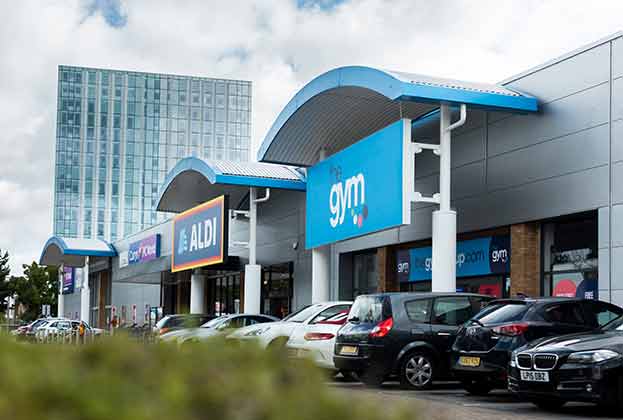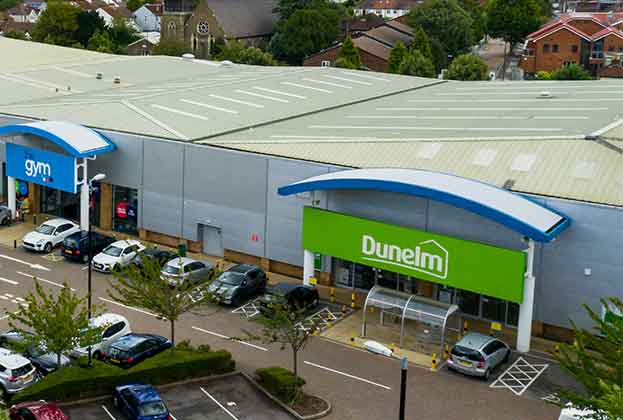After a notable pandemic-related pause in transactional activity, the market has witnessed an acceptable level of recovery but without the anticipated furore
The retail warehouse investment market got off to a good start in Q1 with volumes up 14% on the same period in 2019 equating to £369m in transactions. Unsurprisingly, Q2 investment activity took a nosedive, recording the smallest uptake of any quarter in the last 20 years at only £141m, a 59% fall on the same period the previous year; clearly, the market paused to assess the impact of the pandemic on the sectors occupiers and their ability to pay rent, enabling investors to reassess ERV levels where necessary.
Nevertheless, activity in Q3 swiftly recovered, posting a 32% growth on Q3 2019 and accounting for £505m worth of transactions. We have been banging the drum on the resilience of the retail warehouse sector for some time, and it was certainly the preferred retail sector for investors pre-pandemic. The quick and significant return to growth in Q3 highlights how this position hasn’t changed, and indeed, has been enhanced upon given the durability it has continued to display over the last nine months. A higher proportion of retailers remained open during the initial crisis than in shopping centres or on high streets, and as a direct result, rent and service charge payments have been higher. With less exposure to mid-market fashion, the sector has also seen less insolvency activity than the rest of retail, whilst its large units and ample car parking provision have also meant it has proven to be more social distancing friendly, culminating in stronger footfall recovery and more robust trading performance across a number of retail warehouse-focused subsectors.
However, although transactional activity saw a marked improvement in Q3, the sentiment in the market suggests what we have seen so far is a trickle, not the anticipated flood. In previous editions of this spotlight dating back to this time last year, we have highlighted the comparative appeal of retail warehousing as an asset class with the expectation that a number of overseas investors, in particular, all with plenty of liquidity, were on the precipice of pulling the proverbial trigger and significantly expanding their exposure to UK retail warehousing. Debt availability has certainly got the ball rolling, particularly for Prime assets. This is set to improve over the next 12 months with more lenders coming to the party than has historically been the case, primarily as a result of the low loan-to-value ratios and high margin potential, coupled with the strong occupational story of resilient consumer behaviour and the defensibility of income across the sector.
The question, therefore, becomes what else needs to happen to convince the other investors that have been circling to open their cheque books? It is important to remember that in light of the pandemic, something that of course wasn’t even on the radar when we first pre-empted that the retail warehouse sector was on the cusp of a significant uptick in investment performance, investors in the current climate would be buying assets where a significant proportion of tenants have not paid rent for 12 months, not to mention the spectre of further insolvency activity. Some investors have, therefore, seemingly been waiting a little longer on the assumption capital values may fall a little further, particularly whilst concern remains about the sustainability of ERVs. However, the evidence suggests Q4 marks the beginning of this uptick with plenty of transactional activity underway, albeit with the width and depth of demand across secondary assets further to travel.
In terms of pricing, our prime yields have again moved inwards back to levels seen 12 months prior, now standing 6.50% for both Prime Restricted and Prime Open A1 (a sharpening of 25 and 50 bps respectively). This is indicative of investors that have begun to move, supported by the belief in the performance of the discounters rather than fashion and recognising the value in the stronger metropolitan alternative-use assets that aren’t always available in the market.
There does, however, appear to be a gap forming between prime and secondary assets as well as Shopping Parks. Yields have moved outwards to 9.50% on both Secondary Restricted and Secondary Open A1 (a 25 and 75 bps softening respectively). Meanwhile, Shopping Parks have softened by more than 100 bps to 8.50%, unsurprising considering the fashion sector has been one of the hardest hit since the pandemic with the most insolvency activity to date. However, with interest on borrowing at around half the yield on these assets, they too could tickle an investor's fancy in the not-too-distant future.
Nobody is suggesting that investors are waiting to buy at the absolute nadir of the market, only that they have wanted to get closer to it. It is our view that with a vaccination programme well underway, coupled with some encouraging noises from retail operators on their Easter performance, this may be what tips those investors that have been wavering into action, assuming owners are realistic on price. This will also give lenders the comfort they need by providing greater clarity on rental levels and covenant strengths, especially for less prime stock.
Schemes that are dominant or convenient will continue to be top of investors' wish lists, particularly those with a foodstore anchor. Brexit is the one potential spanner in the works as it will undoubtedly lead to a disruption in retailer supply chains and their ability to get goods into the UK. If this coincides with the moment that shoppers are free from the shackles of the pandemic and poised to spend at levels previously seen, not being able to get their spring bulbs, bikes and garden furniture may well prove to be an opportunity missed.
Read the articles within Spotlight: UK Retail Warehousing below.
.jpg)

